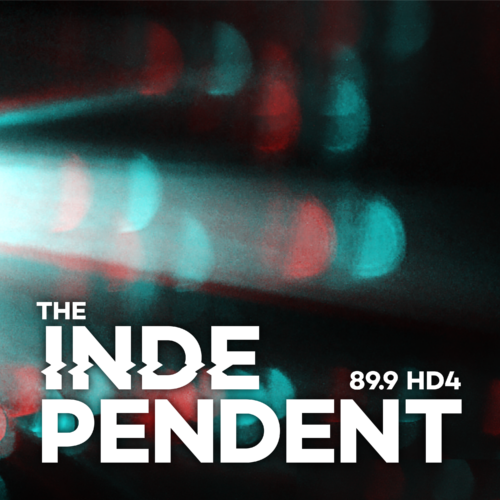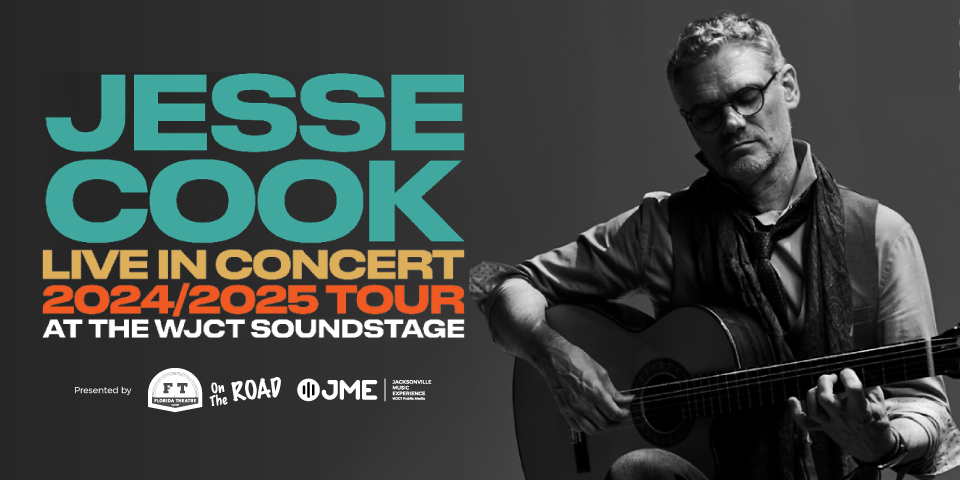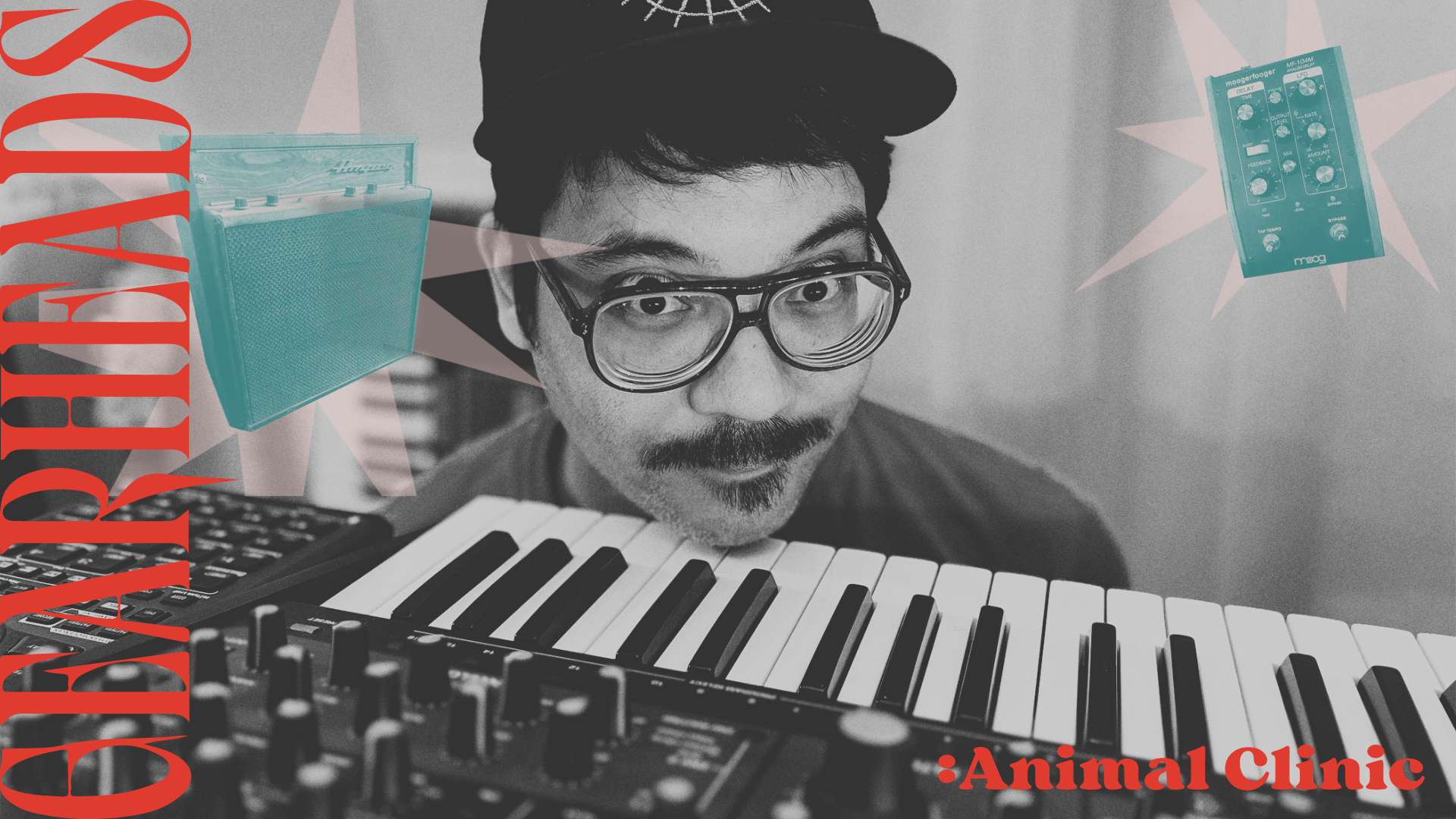
Gathering production influence from Brian Eno and songwriting inspiration from Leonard Cohen, solo synth act Animal Clinic aims for complexity in both sound and emotion. “I wanted to say something very personal,” says Animal Clinic’s sole musician James Scott Rubia. “I wanted to say it with detail, and I wanted listeners to be able to hopefully feel what I was feeling in that moment lyrically. And it can come out a little sad-boy sometimes, but that’s okay. Actually, no—that’s great.”
It wasn’t until Rubia’s former bandmates in The Black Pine influenced them to try synthesizers that they actually started tinkering with them. “I’m more traditionally trained as a piano player and a guitar player,” Rubia says, “and I was doing that years before I even started messing with synthesizers.” In the end, the realization that a synthesizer could be just about any instrument was what won them over. “Synths open up a whole new world of composing music that I’ve missed out on for so long. I don’t know why I waited.” Nowadays, in addition to writing and recording as Animal Clinic, Rubia also contributes keys, guitar, and vocals to Jacksonville supergroup Kairos Creature Club.
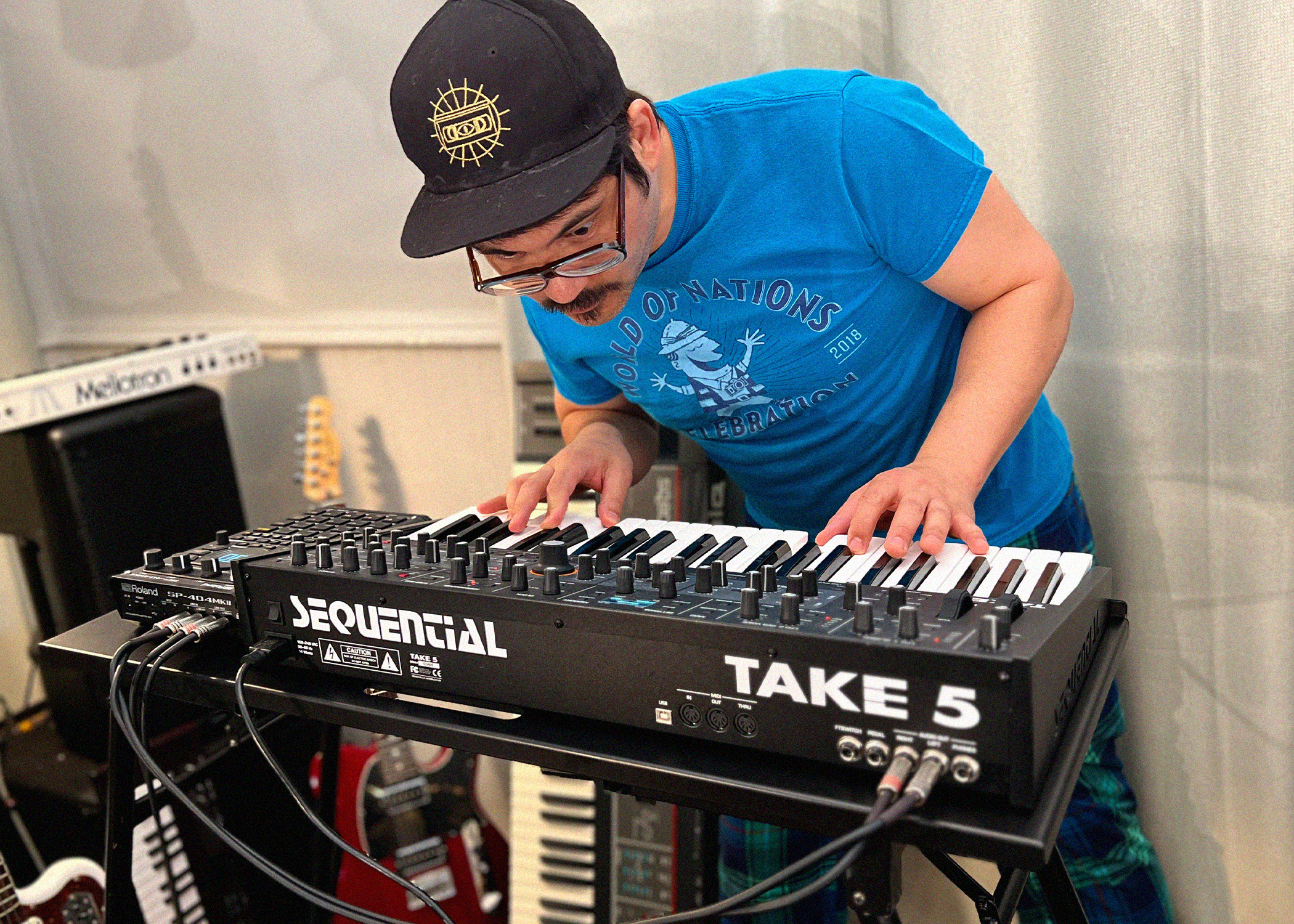
I spoke with singer-songwriter-synthesizerer James Scott Rubia about their Animal Clinic synth essentials.
Essential Synths
This was my first hardware synthesizer. It’s a four-voice polyphonic analog synthesizer. I’d played with synthesizers on the computer before, and this was the first time I ever had something physical with knobs to turn, and that was what really got me down the synth rabbit hole initially. The Korg is used all over both Animal Clinic records that I recorded.
Yamaha DX7
This one’s old 80s synthesizer. FM digital synth. I found it for cheap and used it on so much stuff, and it’s kind of a pain to program, but I spent the time on it and figured it out and started patching my own stuff. In doing that, I realized it’s actually a phenomenal synthesizer, even though you can find them pretty cheap now.
Critter and Guitari is a small Brooklyn-based company that makes these open-source music synthesizers that you can code your own synthesizer into. The Organelle was a useful utility tool to fill in the gaps of sounds and stuff that I wanted but just didn’t have the synthesizer for.
As I went along, I started getting better synthesizers. For Alphaville, FL, I heavily used the Sequential Prophet Rev2, which is a big daddy, 16-voice analog synth. I love it. I could probably talk for hours about all it can do. It’s a very deep synthesizer. It’s super versatile.
This is an old Korg from the 70s that they reissued recently. I was actually using it more of an effects bossa box. I was running a Bass VI bass guitar plugged into it, and it was triggering the synthesizer as I played. The song Flowers in the Snow heavily uses that drone from the MS20. Throughout the whole song, it just created a really nice texture, and the MS20 makes great basslines. It’s an old synth, so it’s a little quirky. You gotta, like, really tweak on it to get the sounds you want, but when you do, it sounds phenomenal.
If I had to pick a piece of gear I couldn’t live without, this is the one. It’s an effects box sampler. Goes back to a very old-school style of sampling. It’s kind of quirky. You kind of have to figure out how to use it, but for some reason, it’s been something that has been with me the whole time. I always find a use for it, whether I want to mangle the sound or I just want to record. If I want to capture something quickly, it’s just so easy to just hit a pad on this and hit record and you’re sampling. That immediacy is where the creativity is: catching those creative moments. I feel like everybody who’s making music should have some kind of recording device on hand.
When it comes to samplers, I also use the Elektron Digitakt for a lot for sequencing because it has a really robust step sequencer on it. It can do things that no other step sequencer can do. You can program really interesting rhythms and really intricate volume changes. It can be so granular in how you can sequence that sort of thing. The Digitakt is so useful for rhythm stuff.
From the archives: the Elektron Digitakt was also recommended by local new wave trio Glass Chapel.
Eurorack Modules: Pamela’s New Workout, Bitbox, Make Noise Strega, and Moog Mother 32
During the pandemic, I wasn’t working, but I had a credit card was collecting unemployment, so I decided to get into Eurorack, which is a really deep synth rabbit hole. Different companies make modules in a specific format size—called Eurorack—using the same kind of power. Eurorack tends to lean itself more towards the experimental and generative. You can use it to set parameters and play within certain note ranges and rhythms, and it will generate stuff within that realm. It kind of emulates how a human would write a song. You can use a sampler to capture what it spits out and then start building around those kind of sounds.
One Eurorack module that was very important to me is called Pamela’s New Workout. It’s kind of a sequencer and a clock module. It seems kind of boring on the surface, but it was very key to creating melodies and Euclidean rhythms that you can’t just program in a typical device. And then there’s a module called the Bitbox, which is a sampler. Using the weird clock module of Pam’s into that Bitbox, you’re able to take samples. And what I would do is record ideas, then take those samples of those ideas, throw them in the Bitbox, and then mangle those ideas with the Pam’s into the Bitbox. So it’s kind of a meta way of sampling. I don’t sample other people’s songs and chop it up. I sample myself and chop that up, and then I keep mangling it and shaping it like a blank ball of clay.
Then the Make Noise Strega is a really abstract delay. It takes a really dirty karaoke-like delay and it stacks them all together. It ends up sounding like something that’s been underwater for 30 years, clicking and creaking. It’s really good for textures. You can play a lead sound, but then you bring in that delay, and with the way it layers on it, it almost creates a whole new sound. It’s not just an echo.
The Moog Mother 32 is a simple single-oscillator Eurorack module that just has that Moog sound. And anybody who’s ever played with a Moog knows they have a sound. It’s very small and it’s got the right kind of patch points on it to take that Moog sound and really twist it up and get something different and new out of it.
I feed everything into Ableton, which I use to do all the arranging. That’s where I overdub guitars, bass guitar, acoustic guitar, and vocals, and where I layer harmonies and do all the things that you can’t do within a hardware sequencer. Ableton is the glue of everything. It allows me to take all of the elements and put them all together for that finished song… and actually finish it.
Animal Clinic’s latest full length is Alphaville, Fl. Stream here. Follow Rubia’s musical projects on Instagram and Animal Clinic’s YouTube page.

Mr. Al Pete and Notsucal Release Their Latest Collab, ‘G4.5’

Dinner Party, Tom Misch and More from the Neighborhood with Mr. Al Pete

An Ultra-Chill Playlist from the Latest Episode of Electro Lounge

Sing Out Loud Festival Returns With Hozier, Beabadoobee, Father John Misty, Vance Joy and More

Chicago Alt-Country Faves Wilco Return to St. Augustine with Indie-Folk Great Waxahatchee
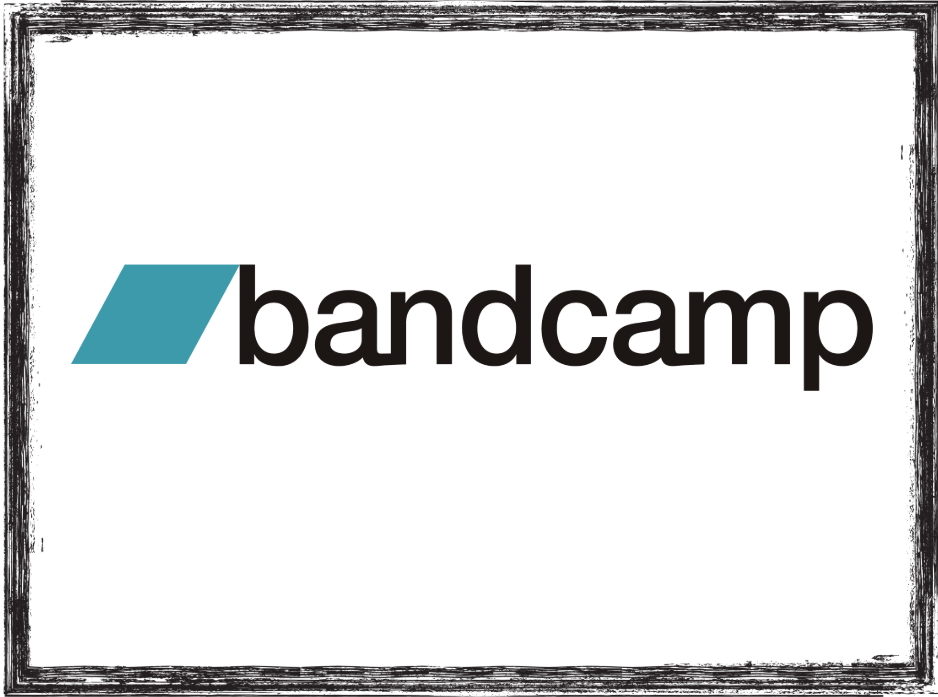
Looking for an Alternative to Spotify? Consider Hopping on the band(camp) Wagon
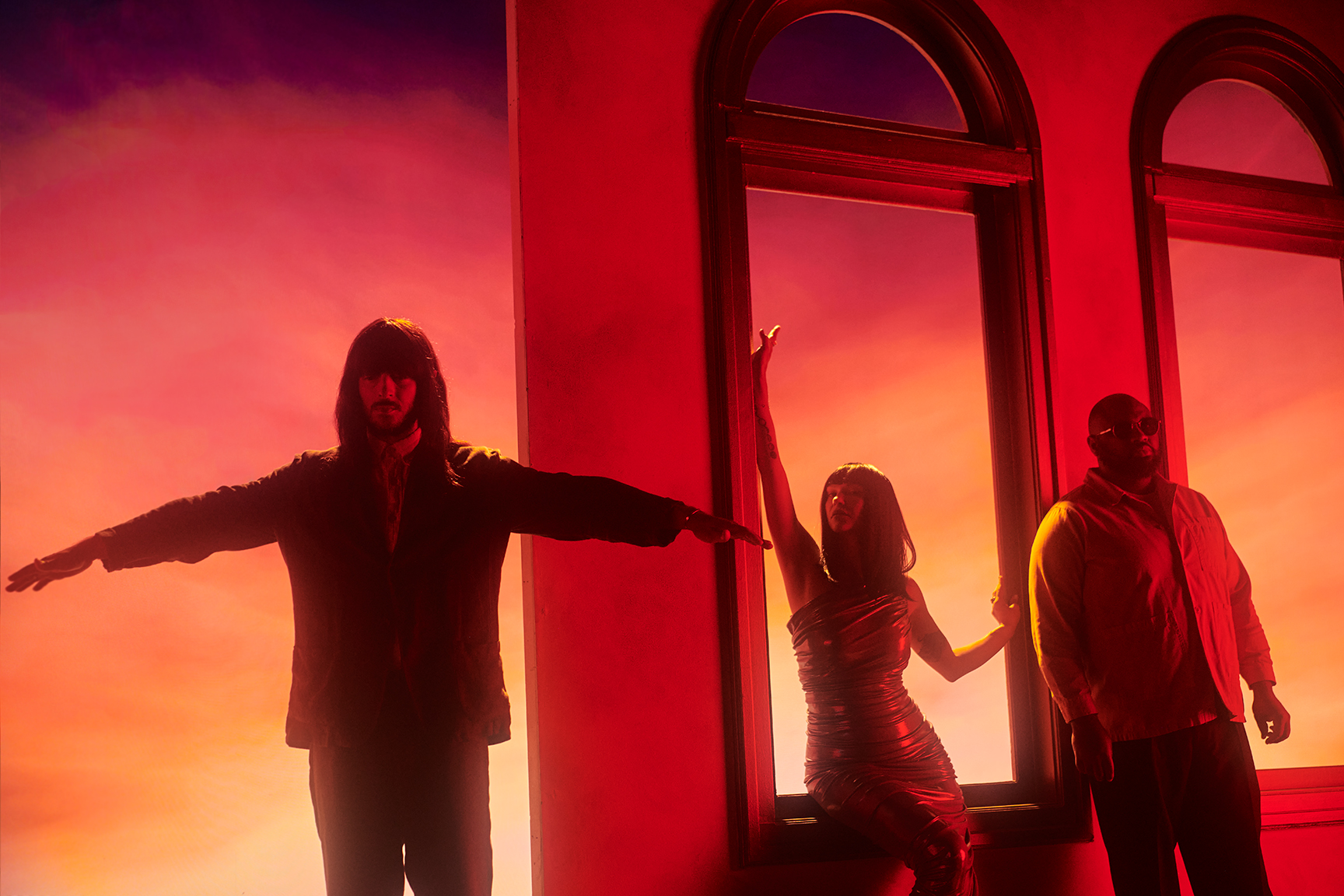
Khruangbin to Bring ‘A LA SALA’ Tour to St. Augustine in April

Perfume Genius, Flipturn, Tamino + Mitski and 6 New Songs to Stream
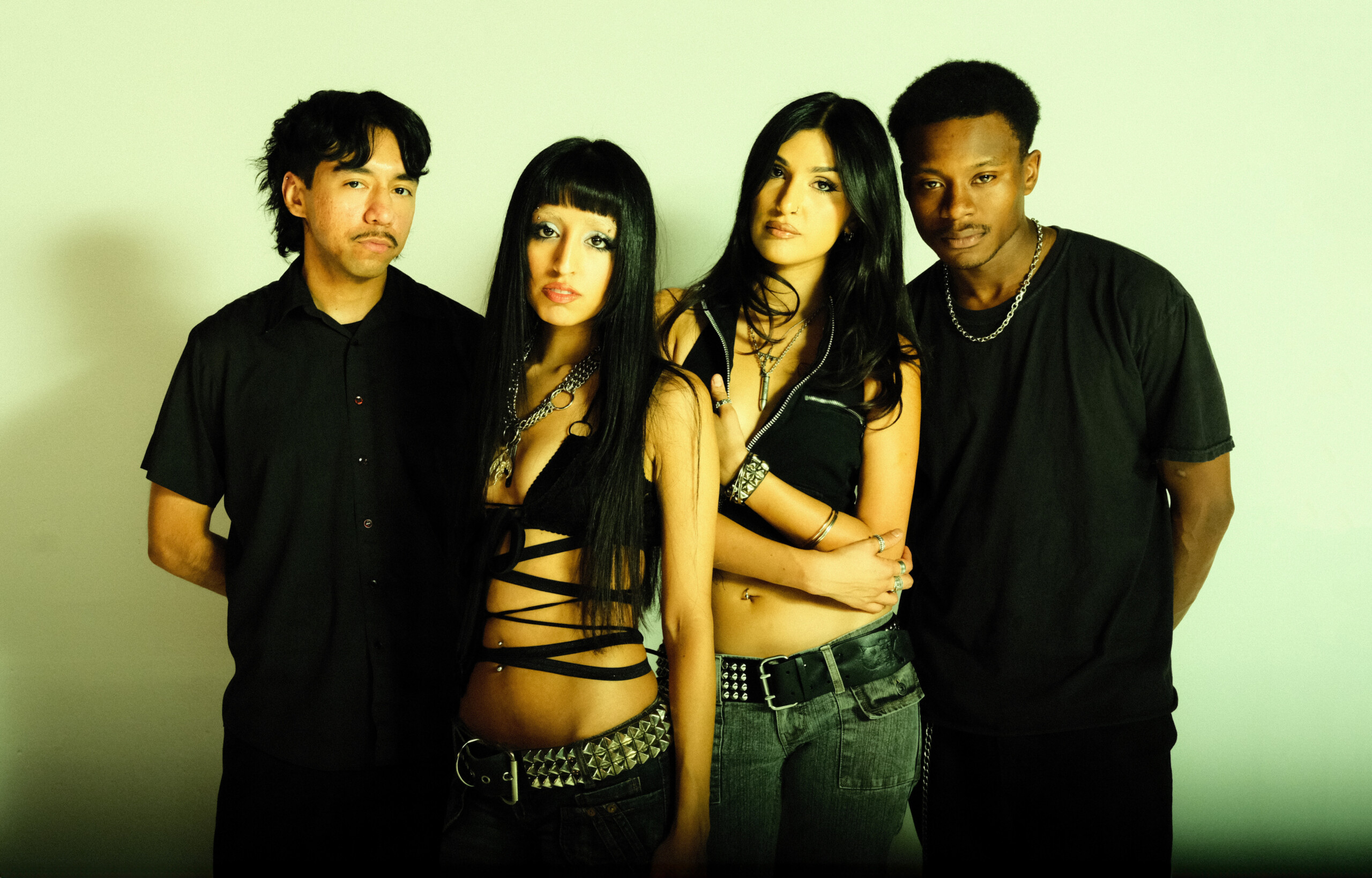
Song of the Day | “all tied up” by Glixen



